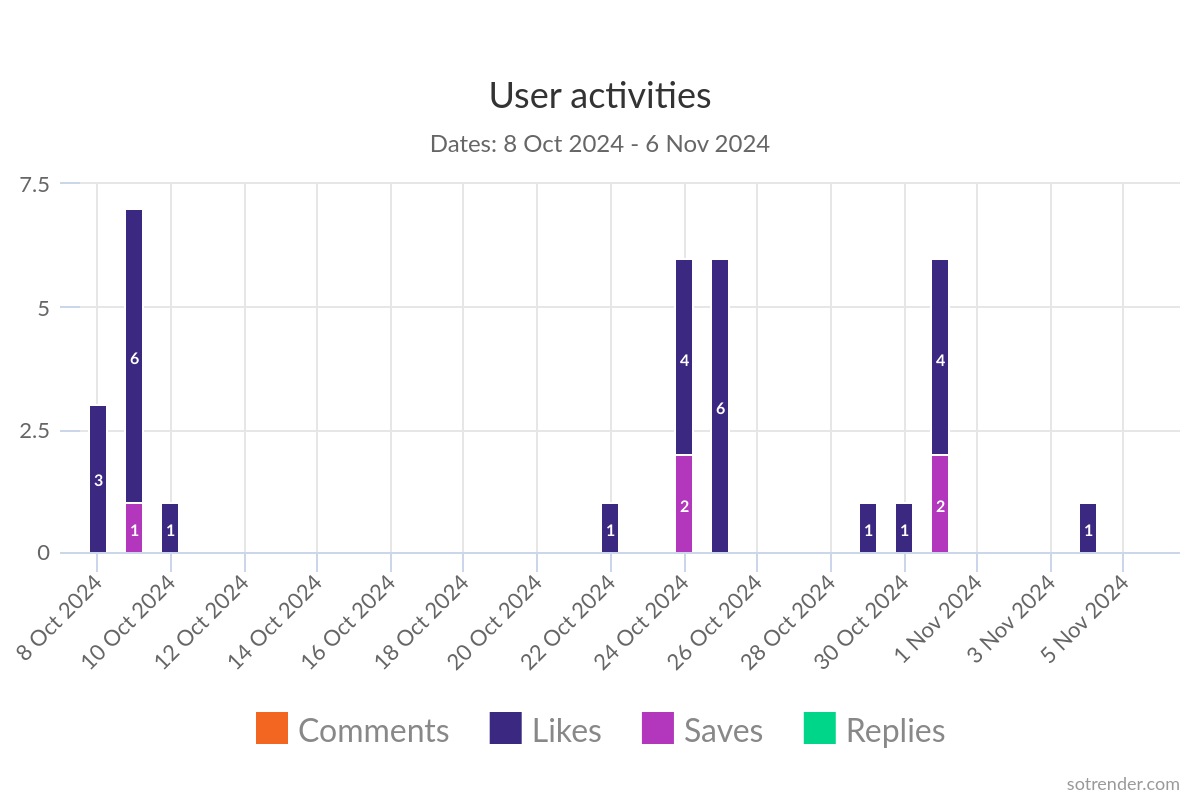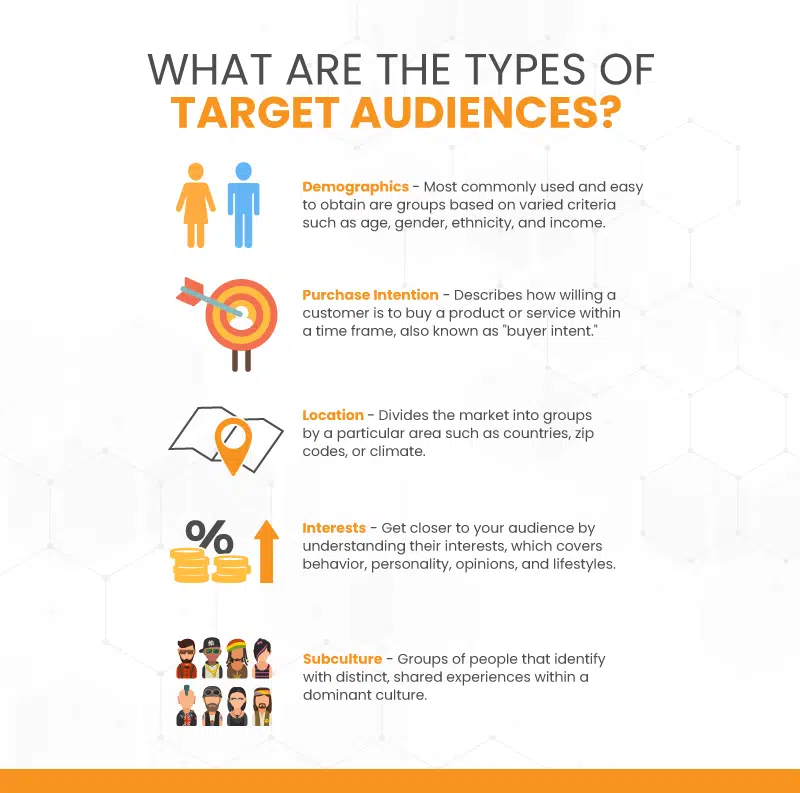As an online business owner, audience segmentation and understanding your potential buyers are paramount to your success. Gaining insight into who they are, what they desire, and their behavior through audience research can significantly influence the effectiveness of your marketing campaign.
For digital marketers and social media managers, this profound understanding is not merely beneficial, it is crucial for achieving success. This article will guide you through the steps to identify, analyze, and engage your target audience effectively across social media channels, ensuring your business succeeds.
Understanding Your Target Audience
Understanding your target audience is crucial for creating effective marketing strategies that resonate with your ideal customers. A target audience refers to a specific audience that is most likely to benefit from your product, service, or message, and gaining customer insights is crucial for this understanding. By identifying and understanding this group, you can tailor your marketing strategies to meet their needs and preferences, ultimately driving better engagement and conversions.
What Is a Target Audience?
A target audience is a defined segment of the overall population that shares common characteristics, demographics, interests, or needs. It’s a narrower segment within the broader target market. Identifying your target audience involves conducting thorough market research and analyzing audience demographics, customer behavior, and preferences. This process helps you understand who your potential customers are and how best to reach them with your marketing efforts.
Types of Target Audiences
There are various types of target audiences, each based on different segmentation criteria. Demographic segmentation divides a market into smaller categories based on variable characteristics such as age, race, gender, marital status, income, education, and nationality. For example, a luxury brand might target high-income individuals, while a toy company might focus on parents with young children.
Behavioral segmentation divides the market based on consumer behaviors, such as purchasing habits, brand loyalty, and product usage.
Interest-based segmentation categorizes consumers according to their interests, activities, opinions, values, and overall lifestyle. For instance, a fitness brand might target health enthusiasts who regularly engage in physical activities and follow a healthy lifestyle. Understanding these different types of target audiences allows you to create more personalized and effective marketing campaigns.
Why Understanding Your Target Audience Is Crucial for Your Marketing Strategy
As digital activities evolve rapidly, it’s clear that a one-size-fits-all approach simply doesn’t work. To create effective marketing strategies, it is essential to find your target audience and understand their specific needs and preferences. Each customer has unique needs, preferences, and behaviors. By understanding your target audience, you can customize your social media strategies to connect with them on a deeper level. This tailored approach leads to improved audience engagement, higher conversion rates, and increased customer loyalty.
The Online Playground for Your Business
The first step in audience targeting is identifying who your audience is. In the digital area, many local businesses build websites and social profiles to attract new customers, on the same note many businesses start online only and do not have a local store. One of the growing niches is ecommerce. Many store owners who sell goods, artists and creators create an e-commerce website to share their products to a significant range of potential buyers all over the world. In addition to a website for selling your products, various social networks allow you to operate a store on their platform, the most common and successful being Instagram and Facebook.
In case you don’t have an e-commerce website yet, you’re not alone, according to Forbes small business statistics, “only 71% of businesses have a website. Of the nearly one-third favoring website-free, 20% say they use social media in lieu of creating a website”.
Techniques to Identify and Segment Your Audience
Beyond demographics, psychographic data – like interests, values, and lifestyle – provides a deeper understanding, and segmenting your audience based on this demographic data allows you to create more personalized and effective marketing campaigns. To be more efficient you can use tools like Google Analytics, Facebook Insights, and CRM data to gather demographic information such as age, gender, location, and occupation. Here are some ideas on how you can nail your market, locate potential audiences, and make your business essential and accessible to various crowds using effective audience segmentation strategies.
#1 Start with Surveys and Questionnaires for Market Research
You will be able to collect direct insights from your existing audience. By collecting audience examples through surveys, you can gain concrete illustrations of your target audience’s characteristics and preferences based on survey data. Try using tools like Google Forms, SurveyMonkey, or Typeform. It will allow you to capture real feedback and tailor segmentation based on preferences.
#2 Make Them Feel Special – Customer Interviews
If you would like to gather qualitative data from in-depth conversations, interviews are the key! You can conduct one-on-one interviews with customers to understand their challenges, needs, and consumer behavior. It will help you uncover deeper motivations that surveys might miss, providing valuable qualitative insights.
#3 Look Into Website Analytics
You can use traffic and behavior patterns to infer audience characteristics. Website analytics can provide valuable data for target audience analysis, helping you understand the demographics and user behavior of your visitors. To get better insights, check tools like Google Analytics and other SEO tools that can provide you to segment users based on location, devices, time spent, bounce rates, and conversion paths.
#4 Check the Social Media Insights
Researching your social media followers can provide valuable insights into your target audience by analyzing follower demographics. By analyzing your followers’ demographics, interests, and behaviors, you can understand what resonates with them and tailor your content accordingly. Social media analytics tools, such as Sotrender, Facebook Insights and Instagram Analytics, can help you track engagement rates, identify popular content, and understand your audience’s preferences. This data is invaluable for refining your marketing strategies and ensuring your messages hit the mark.

#5 Monitor Your Email Engagement
You can easily analyze email performances to identify audience segments and habits by tracking your email open rates, click-through rates (CTR), and engagement models within email marketing campaigns using email segmentation. The easiest way to run those campaigns is with services such as Sender, Mailchimp, or ActiveCampaign. Email marketing will also help segments based on interest levels and content preferences.
#6 Conduct CRM Data Analysis
Use unique components of your audience based on customer relationship management (CRM) data. The most popular CRM tools are Salesforce or HubSpot to analyze customer data related to customer interactions, purchase history, and demographics. There are more CRMs according to your business niche and purposes.
#7 Maintain Competitor Analysis
Conducting a competitor analysis can help you identify gaps in the market and understand your target audience’s needs and preferences, as well as your competitors’ market positioning. By analyzing your competitors’ marketing strategies, target audiences, and customer engagement, you can uncover areas for differentiation and improvement. Look at their social media channels, website content, and customer reviews to gain insights into what works and what doesn’t. This information can help you refine your own marketing efforts and better connect with your specific target audience.
#8 Use Segmentation Based on Customer Journey
Tailor communication based on where individuals are in the buying process through customer journey mapping. Divide users into categories such as awareness, consideration, and decision stages, using behavioral data. It will allow you to optimize communication and content for different stages of engagement.
#9 Try Using Cookies for Tracking
Narrow down visitors based on online behavior, such as page views, clicks, and browsing patterns using behavioral data. You can be assisted by tools and cookies to analyze how users interact with your website or app. This activity will enable real-time personalization and targeting based on behavior.
Creating a Target Audience Profile
Creating a target audience profile, also known as audience profiling, is a crucial step in understanding your ideal customer. A target audience profile is a detailed description of your target audience, including their demographics, interests, behaviors, and pain points. By creating a target audience profile, you can tailor your marketing efforts to specific groups of people, increasing the effectiveness of your marketing campaigns.
Develop Buyer Personas
Persona development involves creating detailed representations of your ideal customer, including their demographics, interests, and pain points. Developing buyer personas can help you understand your target audience’s needs and preferences, allowing you to create targeted marketing campaigns that resonate with them. To develop buyer personas, you can use data from your website analytics, social media analytics, and customer feedback.
Identify Negative Market Segments
Identifying negative market segments is an important step in refining your market segmentation. Negative market segments are groups of people who are not a good fit for your brand or product. By identifying negative market segments, you can avoid wasting resources on marketing efforts that are unlikely to be effective. To identify negative market segments, you can use data from your website analytics, social media analytics, and customer feedback.
Level Up! Understanding Your Potential Customers
The major pain point of many business owners is the question, how to start and how to identify their business potential visitors and buyers through customer profiling. When you divide this task into purpose, method and outcome, it’s very clear what you need to do!

Once you have gathered all the necessary data about your target audience, it’s time to focus on the purpose – fictionalized representations of your ideal customers. These are commonly referred to as “buyer personas” and they allow you to visualize and understand who you are trying to reach with your social media efforts. When creating buyer personas, consider using target audience examples to visualize and understand the different segments you are trying to reach.
Creating buyer personas involves giving each persona a name, age, occupation, interests, goals, pain points, and any other relevant information that will help guide your marketing strategies. This exercise helps humanize your audience and allows you to tailor your messaging specifically towards their needs and desires. You may have more than one persona depending on the different clustering within your target audience.
Your method: Combine insights from surveys, interviews, and analytics to craft personas, each representing a segment with specific goals, pain points, and behaviors.
Its benefit: Personas help in creating personalized content and targeted marketing campaigns. They also provide a clear understanding of your audience, making it easier to tailor your message and engage with them effectively.
Know your audience’s habits on social media platforms
According to pewresearch, understanding social media behavior is crucial as YouTube stands out as the most popular online platform, with 83% of U.S. adults reporting they have used it, making it one of the key social media platforms for reaching your target audience. Although the usage rate is slightly lower, Facebook remains a major presence in the digital space, with 68% of Americans using the platform. In comparison, about 47% of U.S. adults say they use Instagram.
Monitoring and Evaluating Success
To evaluate the effectiveness of your strategies, it’s crucial to monitor and measure success. Focus on key performance indicators such as engagement, click-through, and conversion rates. Utilize tools like Google Analytics and social media analytics platforms to track these metrics and spot emerging trends. Regularly reviewing this data enables you to make data-driven adjustments and fine-tune your strategies to better align with your audience’s needs.
Reaching Your Target Audience
Reaching your target audience is a crucial step in any marketing strategy. Once you have identified your target audience, you need to develop a plan to reach them effectively. Here are some strategies to help you reach your target audience:
Use the Right Marketing Channels
Using the right marketing channels is crucial to reaching your target audience. Here are some marketing channels to consider:
Social media: Social media platforms like Facebook, Instagram, Twitter, and LinkedIn are powerful tools for reaching your target audience. Use these platforms to share content, engage with followers, and run targeted ads.
Search engine marketing: Use search engine marketing (SEM) to reach your target audience through paid search ads. Platforms like Google Ads allow you to target specific keywords and demographics.
Influencer marketing: Collaborate with influencers who have a large following in your target audience. Influencers can help promote your product or service to their followers, increasing your reach and credibility.
Content marketing: Continue to use content marketing to create and distribute valuable content that attracts and engages your target audience. Consistently producing high-quality content can help build trust and authority in your niche.
Email marketing: Maintain a strong email marketing strategy to nurture relationships with your audience. Use email campaigns to keep your audience informed, engaged, and interested in your offerings.
Email Marketing Strategies
Email marketing is a powerful tool to reach your target audience. Here are some email marketing strategies to consider:
Build an email list: Start by building an email list of potential customers who have shown interest in your product or service. Use lead magnets like free e-books, discounts, or exclusive content to encourage sign-ups and use email verification software to confirm address validity.
Create engaging content: Craft emails that are not only informative but also engaging. Use compelling subject lines, personalized greetings, and relevant content that resonates with your target audience.
Use segmentation: Segment your email list based on demographics, purchase history, or engagement levels. This ensures that you are sending the right message to the right people, increasing the chances of conversion.
Use personalization: Personalize your emails by addressing recipients by their names and tailoring content to their preferences. Personalized emails have higher open and click-through rates.
Use automation: Implement automation to streamline your email marketing process. Use tools like Mailchimp or ActiveCampaign to set up automated email sequences for onboarding, follow-ups, and promotions.
Content Marketing
Content marketing is another effective way to reach your target audience. Here are some content marketing strategies to consider:
Create high-quality content: Focus on creating high-quality, valuable content that addresses the needs and interests of your target audience. This could be in the form of blog posts, articles, videos, or infographics.
Use storytelling: Incorporate storytelling into your content to make it more engaging and memorable. Share stories that resonate with your audience’s experiences and emotions.
Use visuals: Enhance your content with visuals such as images, videos, and infographics. Visual content is more engaging and can help convey your message more effectively.
Use SEO: Optimize your content for search engines to increase its visibility. Use relevant keywords, meta descriptions, and internal linking to improve your search engine rankings.
Use distribution channels: Leverage various distribution channels to reach a wider audience. Share your content on social media platforms, email newsletters, and other relevant channels to maximize its reach.
By using these strategies, you can effectively reach your target audience and increase your chances of success. Remember to always keep your target audience in mind and tailor your marketing efforts to their needs and preferences. If you need expert guidance, working with a specialized SaaS content marketing agency can help you implement these strategies more efficiently and achieve better results.
Continuously Analyze and Adapt
Continuously analyzing and adapting your target audience through audience analysis is crucial for maintaining a successful marketing strategy. Your target audience is constantly changing, and their needs and preferences may shift over time. By continuously analyzing and adapting your target audience, you can ensure that your marketing efforts remain effective and relevant.
To continuously analyze and adapt your target audience, you can use data from your website analytics, social media analytics, and customer feedback. You can also conduct regular surveys and focus groups to gather more information about your target audience. By staying up-to-date with industry trends and emerging market trends, you can refine your target audience and create more effective marketing campaigns.
By following these steps, you can create a comprehensive target audience profile that will help you tailor your marketing efforts to specific groups of people. Remember to continuously analyze and adapt your target audience to ensure that your marketing efforts remain effective and relevant.





